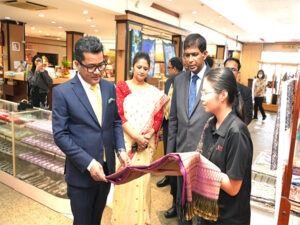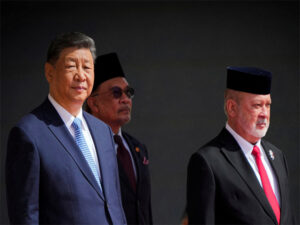‘Shaheed Minar’, Raju sculpture — Historic student memorials in Dhaka which powered anti-government protests
Dhaka, Aug 28 (PTI) The recent anti-government protests in Bangladesh have revived people’s interest in some of the most celebrated memorials in Dhaka such as the ‘Shaheed Minar’ and the Raju sculpture erected in memory of a martyred students’ union leader, which also served as major hotbeds of the student-led resistance.
Located in the Dhaka University area, these sites also served as major hotbeds of the student-led resistance that began in July and eventually engulfed the entire country leading to the fall of the Sheikh Hasina-led government and her fleeing to India on August 5.
But, the city of Dhaka is no stranger to public movements, as the history of Bangladesh is studded with many landmark moments that have shaped its destiny in the past 70 years.
‘Shaheed Minar’ in the Dhaka University area where people gather these days in a relatively relaxed environment is akin to a pilgrimage site for the people of Bangladesh. While the main memorial – represented by a total of five vertical panels including a huge central panel with its bent top portion and flanked by two vertical panels each on both sides and a bright red circle in the backdrop — is in Dhaka, several replicas of it exist in many other cities of Bangladesh.
In its current form, it has existed for over 50 years as it was rebuilt after the Liberation War of 1971 which led to the birth of a new nation of Bangladesh.
The ‘Shaheed Minar’ was originally established to honour the lives lost during the Bengali language movement in 1952 when the region was known as East Pakistan with its capital at Dhaka.
Generations after generations have grown up in Dhaka hearing the story of the brave university students who died in police action on February 21, 1952, while struggling to get the status of state language for Bengali.
Even after 70 years, the legend of ‘Ekushey February’ (February 21) still lives on in the hearts and minds of the people of Bangladesh. It was later recognised by the UN as International Mother Language Day.
The echoes of this historic struggle could be felt in Dhaka in 2024 too as several lives have been lost in the violent anti-quota protests that eventually turned into unprecedented anti-government resistance.
Huge gatherings took place at ‘Shaheed Minar’ during the agitation as protesters drew strength from both the site’s legacy as well as its symbolism, with leaders making fiery speeches in Bengali.
Artworks have come up on Dhaka walls, including in the varsity area to memorialise the recent protests, many of these murals depict ‘Shaheed Minar’ or bear slogans like ‘This is New Bangladesh’ and ’36 July We Will Never Forget We Will Never Forgive’.
Mohd Shahid, who lives near ‘Shaheed Minar’, says, this monument site along with Dhaka University’s Teacher-Student Centre (TSC) area and Shahbagh were the hotbeds of the recent protests.
“When police firing took place, I could hear it from my house, see several thousands of people in the streets, defiant despite curfew restrictions. Those gunshots still echo in my head when I think of it,” he told PTI during his visit to the memorial on August 19.
Large-scale and curfew-defying protests were also held at the square facing the TSC, the centrepiece of which is a famous mounted sculpture depicting a group of students with hands linked and marching together in a defiant posture.
Called ‘Shontrash Birodhi Raju Sharokh Bhashkorjo (‘Anti-Terrorism Raju Memorial Sculpture’), it was erected in 1997 “in memory of martyr Moin Hossain Raju, a central leader of Bangladesh Students’ Union who led an anti-terrorism procession of Ganatantric Chhatra Oikya on March 13, 1992 at the Dhaka University campus, and also in commemoration of the departed souls of other martyrs”, reads a marble plaque embedded on its raised platform.
Made by sculptor Shyamal Chowdhury, Raju Memorial has become one of the defining images of the anti-government protests that brought down the Sheikh Hasina-led government.
Artworks related to songs and murals hailing the resistance make visual reference to this memorial often depicting its silhouetted image.
The site recently bore witness to small protests by university students demanding “no political interference on campus” and early conduct of students’ union elections.
A music concert was held at the memorial — located in a traffic roundabout — on August 23 in aid of people affected by floods in Bangladesh.
While the sculpture was lit up in colourful hues, two giant hoardings bearing slogans in Bengali flanked the sculpture, forming an artistic backdrop.
A band also played Bangla rap songs with lyrics recalling the anti-government protests that ousted the previous government.
The protests had reached a crescendo on August 5, when Hasina resigned as prime minister and fled the country, even as protesters had termed the fall of the government and her departure a “day of victory”.
Another huge sculpture — ‘Shoparjito Shadhinota’ which stands in an enclosed area opposite the TSC marks the struggle and victory in the Liberation War, while ‘Oporajeyo Bangla’ sculptural artwork in a nod to the 1971 war, located in the Dhaka University campus also celebrates the struggle for the creation of Bangladesh.






